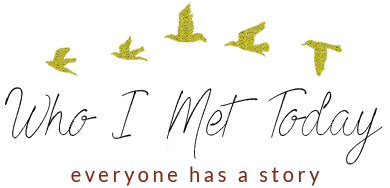Kristen Morita – Baby Sign
When I visited my young granddaughter (and her parents!), her simple hand movement declared an end to her dinner. All done. And bath time. And observing the gazelles at the zoo. A different gesture demanded more—strawberries, milk, time in the pool, elephants.
When my boys were infants and toddlers, baby sign was not “a thing.”
Kristen Morita is a Washington state speech pathologist and mom to two young daughters. She works with children who have articulation issues, developmental language delays, stuttering problems, or any speech disorder that impacts their schoolwork.
She likes utilizing baby sign in her speech therapy practice and also at home with her own children.

“In past decades,” says Kristen, “it was widely believed if you taught babies to sign, they wouldn’t talk.”
But research proves the opposite and, nowadays, baby sign is prevalent in homes and preschools and daycares. Babies copy hand movements (all done, please, or more, for example) long before they can make the speech sound. It’s a way for parents and caregivers to communicate with a baby before the child is verbal.
“Baby sign also provides those kids who are verbally delayed a different way to talk,” says Kristen.
Does it make babies and toddlers less frustrated? Less apt to cry and fuss or scream because they can’t get their point across? When adults can understand their needs and wants, many believe young children are less likely to throw tantrums.
“And baby sign may increase the child’s eventual vocabulary,” says Kristen. “A child’s ability to understand symbolism through gestures can help facilitate learning language. When teaching language, you can’t force a child to say a word, but you can help your child sign,” she explains.
While my granddaughter is proficient at signing she’d like more, I don’t see a thank you sign when she receives another strawberry or book or bite of ice cream. “When we say thank you,” says Kristen, “the purpose is to be polite. And babies don’t understand politeness. “Rather than thinking of what an adult might say, it’s best to think of what a baby will want to say. They ask for things, and please makes more sense than thank you.

Like any language, modeling is the first and best step to teach your baby a new sign (Kristen’s favorite baby sign dictionary). Kristen suggests every time a parent or grandparent says more, they make the sign. Would you like more blueberries, more crackers, more water? And then relax. Don’t expect the child to copy the sign for at least a week.
If the baby sees the sign over and over—and doesn’t copy it—the next step is to give the child the opportunity to use the gesture. Do you want more blueberries? “Pause for three long seconds,” says Kristen. “Given the time to respond, perhaps they will make the sign. If not, give them what they want anyway.”
Sometimes, a young child doesn’t realize they should copy the sign. In this case, manipulate the baby’s hands into the more sign and hand them the desired item. But, Kristen warns, “The parent should be certain the baby wants more. Otherwise, this technique won’t make any sense to the baby.”
Besides teaching her daughters baby sign, Kristen works hard to preserve her culture and celebrate it with her children. Growing up in Southern California, Kristen lived in a diverse community. Both parents were American-born, one of Japanese descent, the other Chinese. On her blog, Mochi Mommy, Kristen highlights holidays, traditions, and foods important to families in Japan.
“Japanese holidays fall on the odd month and have an easy-to-remember pattern,” says Kristen. New Year’s Day is 1/1. Girls’ Day is 3/3. Children’s Day falls on 5/5, and The Star Festival on 7/7.
“Girls’ Day is a beautiful holiday for girls, but the country’s boys celebrate too. Families display elaborate dolls, representing Japanese royalty, to honor their children.

Kristen’s beautiful mochi!
Mochi is the perfect holiday treat in Japan. “It’s not a dessert or an ice cream or the over-processed sweet concoction we may see in the U.S.,” says Kristen. Mochi comes from an ultra-sticky type of rice. After the rice cooks, it’s pounded and pounded until it forms a dense block of rice cake. And that’s it–that’s mochi.
Kristen’s daughters are lucky little girls. Although Kristen didn’t follow these traditions while growing up, her daughters enjoy celebrating their heritage and all the Japanese holidays. And, of course, every American holiday too!
Photos courtesy of Kristen Morita
PS—Cooking through the pandemic, a King Arthur baking instructor, and a Brooklyn woman who flaneurs.





